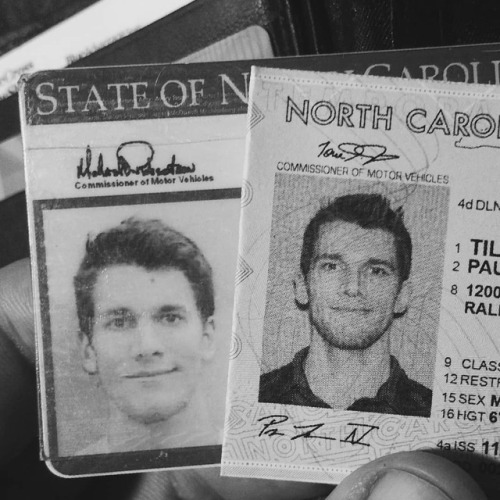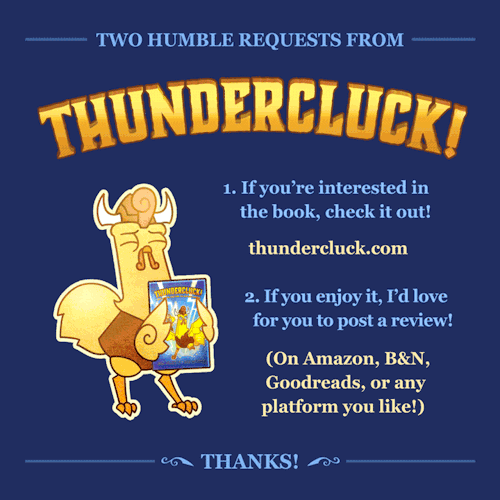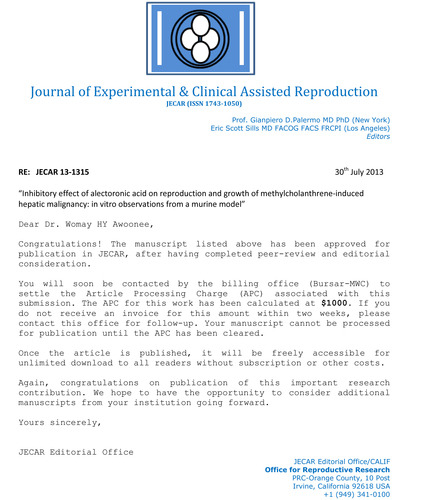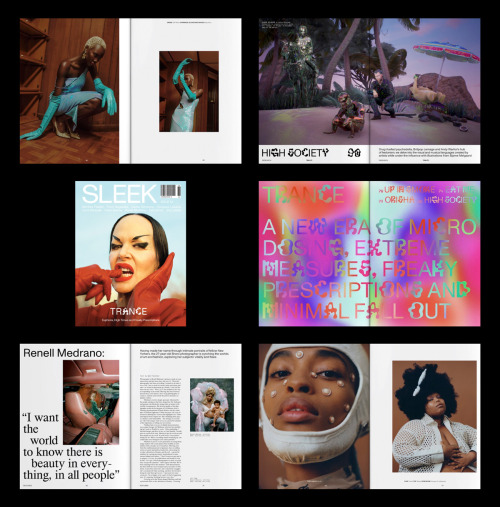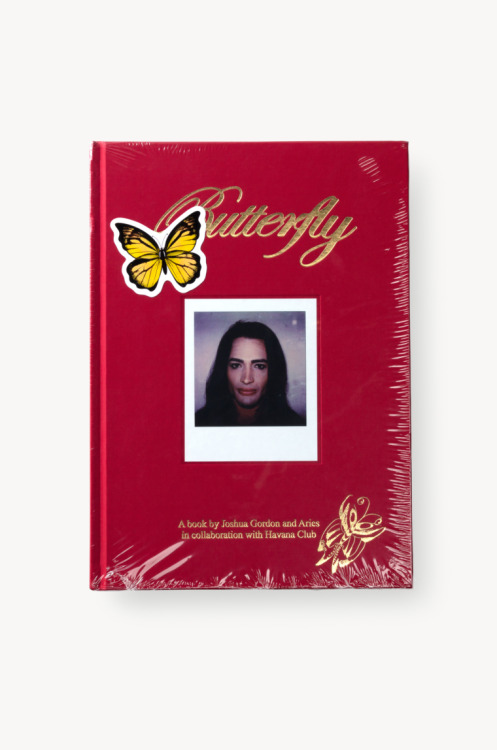#publishing
MOTION MONDAY (11/12/18): It’s My Birthday!
Hey folks, Paul here for Motion Monday… on my birthday! I had to get a new license, so above you can see:
- Me in 2010, turning 25
- Me in 2018, turning 33
Almost a third of a century! Anyway, for my big day I have…
SHAMELESS PROMOTIONAL REQUESTS!
Enjoy the Thundercluck book trailer below! And then check out…
Hope you enjoy! And for anyone with young readers in their life, give the gift of THUNDERCLUCK this holiday season :D
Thanks!
Paul
Post link
THUNDER THURSDAY #83: Book Requests, and a Tutorial Question!
Hey folks, Paul here for THUNDER THURSDAY! Today marks one month since the book came out–I’ve been thrilled with the journey so far, and I’d love to keep the momentum going!
If you’re into it, check out thundercluck.com/book and any of the following:
Now, about tutorials!
While I enjoyed compiling the TUTOR TUESDAY PDFs, I know it’s been a hot minute since we had new tutorial content to share. Meg (@rawranansi), our tutorial mastermind, has been super busy with work! So I wanted to ask:
Would you be interested in animation tutorials for OpenToonz?

OpenToonz is an open source (which means ethically free!) 2D animation software, and I’ve been learning it myself since I started using it for the book trailer this past summer.
It’s a powerful program, though the interface definitely takes some getting used-to. I’d love to share what I’ve learned, especially since the program’s available for all!
If you’re interested, let me know. Comments and reblogs are much appreciated! Thanks,
Paul
Post link
so I’m looking at short story publishers (fantasy)
- Tor, cream of the crop. 25 cents a word. Stories can be read for free (YES). Slowish response time at ~3 months. Prefer under 12k, absolute maximum is 17.5k. Don’t bother if it’s not highly professional quality. SFWA qualifying.
- Crossed Genres. 6 cents a word. Different theme each month (this month’s is “failure”). Submissions must combine either sci-fi or fantasy with the theme. Response time 1 month. 1k-6k, no exceptions. SFWA qualifying.
- Long Hidden, anthology from CG. 6 cents a word. 2k-8k, no exceptions. Must take place before 1935. Protagonist(s) must be under 18 and marginalized in their time and place. Must be sci-fi/fantasy/horror. Deadline 30 April. Response by 1 October.
- Queers Destroy Science Fiction. Sci-fi only right now, author must identify as queer (gay, lesbian, bi, ace, pan, trans, genderfluid, etc, just not cishet). 7.5k max. Deadline 15 February. Responses by 1 March. You can submit one flash fiction and one short story at the same time. (My network blocks the Lightspeed site for some reason, so I can’t get all the submission details. >_>) Probably SFWA qualifying?
- Women in Practical Armor. 6 cents a word. 2k-5k. Must be about 1) a female warrior who 2) is already empowered and 3) wears sensible armour. Deadline 1 April. Response within three months.
- Fiction Vortex. $10 per story, with $20 and $30 for editor’s and readers’ choice stories (hoping to improve). Speculative fiction only. Imaginative but non-florid stories. 7.5k maximum, preference for 5k and under. (I kind of want to support them on general principle.)
- Urban Fantasy Magazine. 6 cents a word. 8k max, under 4k preferred. Must be urban fantasy (aka, the modern world, doesn’t need to be a literal city).
- Nightmare. 6 cents a word. 1.5-7.5k, preference for under 5k. Horror and dark fantasy. Response time up to two weeks. SFWA and HWA qualifying.
- Apex Magazine. 6 cents a word. 7.5k max, no exceptions. Dark sci-fi/fantasy/horror. SFWA qualifying.
- Asimov’s Science Fiction. 8-10 cents a word. 20k max, 1k minimum. Sci-fi; borderline fantasy is ok, but not S&S. Prefer character focused. Response time 5 weeks; query at 3 months. SFWA qualifying, ofc.
- Buzzy Mag. 10 cents a word. 10k max. Should be acceptable for anyone 15+. Response time 6-8 weeks. SFWA qualifying.
- Strange Horizons. 8 cents a word. Speculative fiction. 10k max, prefers under 5k. Response time 40 days. Particularly interested in diverse perspectives, nuanced approahces to political issues, and hypertexts. SFWA qualifying.
- Fantasy and Science Fiction. 7-12 cents a word. Speculative fiction, preference for character focus, would like more science-fiction or humour. 25k maximum. Prefers Courier. Response time 15 days.
- Scigentasy. 3 cents a word. .5-5k. Science-fiction and fantasy, progressive/feminist emphasis. Fantastic Stories of the Imagination. 15 cents a word. 3k maximum. Any sci-fi/fantasy, they like a literary bent. (psst, steinbecks!) They also like to see both traditional and experimental approaches. Response time two weeks.
- Beneath Ceaseless Skies. 6 cents a word. 10k maximum. Fantasy in secondary worlds only (it can be Earth, but drastically different—alternate history or whatever). Character focus, prefer styles that are lush yet clear, limited first or third person narration. Response time usually 2-4 weeks, can be 5-7 weeks. SFWA qualifying.
- Clarkesworld. 10 cents a word up to 4000, 7 afterwards. 1-8k, preferred is 4k. Science-fiction and fantasy. Needs to be well-written and convenient to read on-screen. Appreciates rigour. No talking cats. Response time 2 days. SFWA qualifying.
- Orson Scott Card’s Intergalactic Medicine Show. 6 cents a word. Any length. Science-fiction and fantasy (along with fantastic horror). Good world-building and characterization. Clear straightforward prose. Response time three months. Yes, OSC is editor-in-chief. SFWA qualifying.
- Interzone. Sub-pro rates if anything (but highly respected). 10k max. Short cover letter. Science-fiction and fantasy.
Whenever I see a post like this, I feel like I have to tell people about the Submission Grinder. I just did a search on it and it came up with 135 markets that pay for fantasy short stories. You can search by genre, pay rate, length of story they accept, etc, and it’s constantly being updated, which a post like this can’t be, and you can also use it to keep track of what you’ve sent where and when, and since a lot of people use it for this purpose it’s got a lot of good data about response times and so on. If you are trying to sell fiction or poetry on the regular, it is such a useful tool and I encourage everyone to use it.
“Sting Operation” Finds That Many Online Journals Will Publish Fake Papers, For A Fee
The business model of these “predatory publishers” is a scientific version of those phishes from Nigerians who want help transferring a few million dollars into your bank account.
To find out just how common predatory publishing is, Science contributor John Bohannon sent a deliberately faked research article 305 times to online journals. More than half the journals that supposedly reviewed the fake paper accepted it.
“This sting operation,” Bohannan writes, reveals “the contours of an emerging Wild West in academic publishing.”
Online scientific journals are springing up at a great rate. There are thousands out there. Many, such as PLoS One, are totally respectable. This “open access” model is making good science more accessible than ever before, without making users pay the hefty subscription fees of traditional print journals.
(It should be noted that Science is among these legacy print journals, charging subscription fees and putting much of its online content behind a pay wall.)
But the Internet has also opened the door to clever imitators who collect fees from scientists eager to get published. “It’s the equivalent of paying someone to publish your work on their blog,” Bohannan tells Shots.
These sleazy journals often look legitimate. They bear titles like the American Journal of Polymer Science that closely resemble titles of respected journals. Their mastheads often contain the names of respectable-looking experts. But often it’s all but impossible to tell who’s really behind them or even where in the world they’re located.
The image above shows a letter from a journal offering to publish a fake cancer research paper for a $1,000 fee.
Post link
Thinking of hiring an editor…?

You’ve done it. You’ve come to the end of the road on your first draft or last round of revisions. Where do you go next?
“A professional editor!” many will scream.
But do you really need a professional editor to score that dream publishing contract?
These are a few of my favorite things…

These are some of my favourite writing aids (new and old). What are yours? Show me yo’ bookshelves!
I cannot emphasize enough how much you need to read thoroughly through the terms of any publication before you send your writing to them. It is mandatory that you know and understand what rights you’re giving away when you’re trying to get published.
Just the other day I was emailed by a relatively new indie journal looking for writers. They made it very clear that they did not pay writers for their work, so I figured I’d probably be passing, but I took a look at their Copyright policy out of curiosity and it was a nightmare. They wanted “non-exclusive, irrevocable, royalty-free, perpetual, worldwide license and right to use, display, reproduce, distribute, and publish the Work on the internet and on or in any medium” (that’s copy and pasted btw) and that was the first of 10 sections on their Copyright agreement page. Yikes. That’s exactly the type of publishing nightmare you don’t want to be trapped in.
Most journals will ask for “First North American Rights” or a variation on “First Rights” which operate under the assumption that all right revert back to you and they only have the right to be the first publishers of the work. That is what you need to be looking for because you do want to retain all the rights to your work.
You want all rights to revert back to you upon publication in case you, say, want to publish it again in the future or use it for a bookmark or post it on your blog, or anything else you might want to do with the writing you worked hard on. Any time a publisher wants more than that, be very suspicious. Anyone who wants to own your work forever and be able to do whatever they want with it without your permission is not to be trusted. Anyone who wants all that and wants you to sign away your right to ever be paid for your work is running a scam.
Protect your writing. It’s not just your intellectual property, it’s also your baby. You worked hard on it. You need to do the extra research to protect yourself so that a scammer (or even a well meaning start up) doesn’t steal you work right from under you nose and make money off of it.
Exclusive publishing rights have to have a set time frame! Do not agree to anything that doesn’t clearly state “up to five years from signature” or something like that.
What if the publisher goes defunct? What if they get bought by another publisher who doesn’t care to promote or publish your work? You still can’t to anything with it, you don’t own it anymore!
For a thorough overview of what you should be aware of regarding your intellectual property and publishing rights, please read through this collection of post [https://kriswrites.com/business-musings/contracts-and-dealbreakers/] by Kristine Kathryn Rusch.
Protect your IP. Do not give away your stories.
Every writer needs to read this before signing that contract:
When we launched Youngist in the spring of 2013, we were responding to a powerful need that we saw in our informal networks. Something big was happening, but it wasn’t being covered in ways that were immediate, honest, and present. We wanted to cover “the bold and innovative efforts of an entire generation to shift cultural and political-economic paradigms” in a way that most other publications — even those who might sympathize with young organizers and media-makers — were not.
Our initial editorial staff met through student organizing, primarily through the 2012 National Student Power Convergence, which itself was the result of formalizing networks of young people working against racism, labor exploitation, and neoliberalism in higher education in the United States and Canada. Importantly, many of us met in hallways outside of centralized organizing conversations, frustrated by white, male-dominated, and generally unintentional spaces. We became comrades in moments of personal crisis and would text one another in the middle of the night sending love.
Before coming together as Youngist, some of us met in the streets 2012 Quebec student strike, or when we were working on radical studentnewspaper staffs, or were trying to build student power unions in our states. What we had in common was a strong indignation towards how outside forces were speaking about us, without us. After months of planning and Skype calls between Los Angeles, New York, Atlanta, Toronto, Buffalo, and Montreal, we launched our project on a sharp, clean Tumblr designed by Tom Acker. It was Mother’s Day and the first story we ever published was about Ngoc Loan Tran’s relationship with their mom. A year later—through the tireless work of Maya Richman, a young Montreal-based developer who taught herself how to build a site like this as she went—we launched our official site.
For two and a half years, our meetings (which were conducted remotely over Google Hangouts) happened between restaurant shifts and classes, across time zones, in the midst of family crises, breakups, full-time jobs, and full course loads. At the end of the day, we feel these connections and experiences were invaluable because together we sought to undermine the very existence of borders, and built something together that represented our political affect even if it was itself, not necessarily a political program. Still, we were devoted to intervening and standing up against injustice wherever we saw it, from our own particular vantage point.
Uncompromisingly, we ensured that none of our writers were older than 26. Elders warned we would run up against myriad issues related to turnover and focus. Like youth struggle throughout history, we faced questions of how to keep up our energy, how to build a staff, how to balance our workloads, and where to turn when we weren’t sure how to address novel challenges. Because of these challenges, many of the skills we honed at Youngist were skills we had to learn by doing.
We recognize that a lot of the work we do as organizers, and youth organizers in particular, is transient. Many of us now feel the harsh post-teen fatigue, struggle with depression under a white supremacist, transphobic, capitalist system…but transience is not for naught! We know we meant something to at least a portion of the people we wrote for: the young, dispossessed and visionary.
Ultimately, Youngist was sustained on the work of young people who were immersed in struggle themselves, had no previous experience running a large-scale publishing project, but came from a truly DIY ethos: no dads, no masters, no ad revenue. We launched twovery successful crowdfunding campaigns, which kept the site afloat, paid our writers more than many big media conglomerates, and allowed us to prioritize the voices we still believe are left in the dust in both social movement and millennial narratives.
This model made it possible to write frankly about our visions for a world without policeandprisons, give some much needed advice about surviving graduation, offer alternatives to carceral feminism, level with ourselves about how the revolution is kinda boring, and so much more. (You can read it all on the site, which will remain up for as long as we can swing it.)
Of course, this was not without its struggles. We ran up against burnout, being under-resourced, feeling confused and angry about our lack of ability to grow in the ways we originally envisioned. As the project expanded, we discovered we needed to temper our ambition with realism about our capacity, and the challenges of working horizontally with remote collaborators.
We were mentored by a group of journalists, creatives and writers who exemplify the spirit of the project: independent, critical, and connected to their communities, and to whom we’re immensely grateful: Aura Bogado, Michelle Chen, Caroline Heldman, Angus Johnston, Victoria Mahoney, Sahar Massachi, Janet Mock, Nayantara Sen, and Peter Rothberg. Their belief that marginalized youth can, and should, speak for themselves, on their own platform, was inspiring and sustaining.
Through our struggle and success, we’ve learned, ultimately, that the work is hard — but it’s worth it. To young people now dreaming of building your own platforms, we want to offer words of encouragement, but also offer some useful lessons, so you don’t have to repeat our mistakes.
Find the people that share your values and make shit together.
If you plan to run a thing and not pay yourselves, you need to be extra intentional about who you are, how you will deal with the structural hindrances to different people’s involvement, including the way classism operates and how you plan to combat it.
If you want to pay yourselves and your writers, we don’t recommend relying on ad revenue. Consider relying on your readers because ad-blocking software is killing small publishing crowdfunding campaigns are a major energy-sucker, and grants are never really without strings.
Ask for advice and mentorship, but be uncompromising on your values.
Be responsive and accountable but do not buckle under punitive callout culture because it’s a trap. Know what you’re about and be about it.
Take risks. Make a hypothesis, test it out, fuck up, try something different.
Nourish the marginalized voices. Be willing to meet people where they are, but also lovingly challenge one another because we live under fucked up conditions that don’t give us the tools for our own liberation.
As we sunset Youngist as an active project, we wanted to take a moment to remember the work — and why we started this thing in the first place. We still believe there’s a critical need for young people to have their own spaces to tell their own stories, and if you’ve got that fire in your belly and want to know more about how we did it together, we’re always happy to talk.
We thank all of our readers, advisors, contributors, and everybody who donated resources and money to make Youngist possible.
In love and struggle,
Youngist
Hi! We’re SEASFF Publishing and we want to make publishing Southeast Asian-inspired Science Fiction and Fantasy, written by Southeast Asians, an accessible reality. In order to do that, we’re going to need your help to understand what kind of stories you’d love to read and what you’d be willing to support. Please take about 5-10 minutes out of your day to answer some questions and help us out.https://goo.gl/forms/RKLYQFENW9Llo0GP2
If you’re interested in Southeast Asian-inspired Science Fiction, Fantasy, and connected genres, please come join the discussion at our Facebook Group, which is currently the main place where we will post updates about our project.
I cannot emphasize enough how much you need to read thoroughly through the terms of any publication before you send your writing to them. It is mandatory that you know and understand what rights you’re giving away when you’re trying to get published.
Just the other day I was emailed by a relatively new indie journal looking for writers. They made it very clear that they did not pay writers for their work, so I figured I’d probably be passing, but I took a look at their Copyright policy out of curiosity and it was a nightmare. They wanted “non-exclusive, irrevocable, royalty-free, perpetual, worldwide license and right to use, display, reproduce, distribute, and publish the Work on the internet and on or in any medium” (that’s copy and pasted btw) and that was the first of 10 sections on their Copyright agreement page. Yikes. That’s exactly the type of publishing nightmare you don’t want to be trapped in.
Most journals will ask for “First North American Rights” or a variation on “First Rights” which operate under the assumption that all right revert back to you and they only have the right to be the first publishers of the work. That is what you need to be looking for because you do want to retain all the rights to your work.
You want all rights to revert back to you upon publication in case you, say, want to publish it again in the future or use it for a bookmark or post it on your blog, or anything else you might want to do with the writing you worked hard on. Any time a publisher wants more than that, be very suspicious. Anyone who wants to own your work forever and be able to do whatever they want with it without your permission is not to be trusted. Anyone who wants all that and wants you to sign away your right to ever be paid for your work is running a scam.
Protect your writing. It’s not just your intellectual property, it’s also your baby. You worked hard on it. You need to do the extra research to protect yourself so that a scammer (or even a well meaning start up) doesn’t steal you work right from under you nose and make money off of it.
Exclusive publishing rights have to have a set time frame! Do not agree to anything that doesn’t clearly state “up to five years from signature” or something like that.
What if the publisher goes defunct? What if they get bought by another publisher who doesn’t care to promote or publish your work? You still can’t to anything with it, you don’t own it anymore!
For a thorough overview of what you should be aware of regarding your intellectual property and publishing rights, please read through this collection of post [https://kriswrites.com/business-musings/contracts-and-dealbreakers/] by Kristine Kathryn Rusch.
Protect your IP. Do not give away your stories.
Every writer needs to read this before signing that contract:
Michael K (NiMH) introduces new publication ENTHUSIASMS. Published by Efficient Space with design by Steele Bonus. Killer content. Read more + buy here/now before it’s gone!
Post link
Surkin (FR) returns with another offering from his GENER8ION project. Feat. a killer list of contributors and great design by Timothy Luke (US) grab it here/now
Post link
General_Index is a shape-shifting encyclopaedic project by Ill-Studio. Featured above; Incomplete inventory (Item 003) published by General_Index & Deewee. Read more and buy here/now
Post link
Bi-annual Italian publication Alla Carta 15 returns w The Mediterraneo Issue. Grab here/now!
Post link
ButterflybyJoshua Gordon and Aries. A new photo-documentary book covering the trans scene in Havana. In collaboration with Havana Club here/now
Post link
How To Polish Your Query Letter For A Professional Shine
If you’ve written a query letter (or two, or three), then this has probably happened to you: You’ve put the final touches on your query and you think it’s done—but you still feel something’s not quite right. Since you can’t put your finger on what’s wrong, you send your query letters to literary agentsanyway.
Post link
Wondering about how Carnation Books authors turn their fanfiction into original stories?
We have frequently been asked about the process of scrubbing fic. This process, in which an author takes a work of fanfiction and develops it into an original work, can be a bit intimidating–but it doesn’t have to be. Join us for for a roundtable discussion on the process of scrubbing fic for publishing!
We will host a live Discord event in January (details coming soon!) and will record the event for release as a podcast. Several Carnation Books authors will be participating in the panel, including Clara W. Barrow, author of our very first release, Just Like That (Gone and Changed)
Here are some of the questions that our panel of authors will discuss:
- Where do you even start when you begin scrubbing?
- How long will it take?
- What should you focus on?
- What types of stories work best for transforming into original fiction?
- How do our editors help guide the scrub process?
Do you have more questions about how to scrub fic? Let us know by dropping us an ask, sending us an email at [email protected], or getting in touch on Twitter(@CarnationBooks)!
We will answer your questions during the event through a fun discussion with our talented authors. We look forward to hearing from you!
Many writers aspire to have their novel released via a publishing house after or instead of self–publishing, but have no idea how to approach the subject appropriately. When submitting your manuscript, it’s necessary to write a covering letter that is sent either before or alongside your work. It’s best to keep cover letters short and simple, while at the same time including enough vital information about your piece. We have listed below a few dos and don’ts when it comes to writing a cover letter.
Do:
- Mention any positive reasons that you chose the publishing house, without using too much obvious flattery. Editors are interested to know why your work is so well suited for that particular company.
- Very briefly summarise the novel, describing the genre and touching on the basic plot synopsis, and perhaps including what current market or trend the novel fits into. Next time we will be touching more on how to write an effective synopsis for submission.
- Keep the submission about the novel; personal biography should be kept short and to the point.
Don’t:
- Be aggressive or arrogant; try to stay as humble and polite as possible. After all, it is unwise to suggest you are doing an editor a favour by writing to them.
- Use flowery or over-complicated language. Recipients will not be impressed with an overly formal, unreadable letter that suggests you do not know what style is appropriate. Keep it well written, simple and to the point.
- Challenge the editor. Fairly obvious, but questioning whether a publisher is bold or brave enough to take on a groundbreaking new manuscript may not give the best impression of its writer.
ByRowanvaleBooks. Make sure to check out the website for more interesting articles.
More on Publishing Process and Manuscripts
- The Danger of The Published Author Fantasy
- Five Lies Writers Are Told
- How A Book Gets Published
- How Do You Go About Getting Published
- Formatting your manuscript
- How to research the best literary agents for your book
- What I’m not going to blog about
- Signs that you’re not ready to publish
- Anatomy of a query letter, step by step
- You’ve finished your manuscript! Now what?
- E-queries, how to submit online to agents and editors
- Literary agents, good or evil?
- How to get published
- The Publishing Industry and Making Money Off Books
- A self-publishing guide of sorts
- Choosing a Publishing Path
- How to Publish a Short Story
- Top 10 Literary Magazines to Send Your Best Flash


